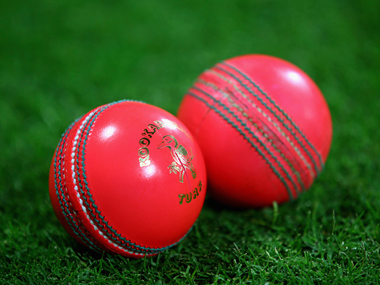The Board of Control for Cricket (BCCI) in India is rushing in where even angels would fear to tread. In the process Indian cricket, like hockey before it, is in danger of losing whatever advantage it enjoyed thus far. Simply put, cricket crowds are not going to come surging in to watch Test matches solely on the basis of the colour of the ball. Significantly, the paraphernalia that comes with the change of colour is loaded against the interests of Indian cricket. The distressing aspect of late is the role of pink-ball cricket’s Indian cheerleaders, which includes one former Test cricketer, who was accused by Australian opener Mathew Hayden in his autobiography Standing My Ground, of suffering from an acute case of ‘greentrackitis’ – “a severe intolerance to green wickets (pitches)” prior to one particular Test at Nagpur. [caption id=“attachment_2845416” align=“alignleft” width=“380”]  Representational image. Getty Images[/caption] And a green pitch is what pink-ball cricket brings in its wake, which could damage Indian cricket beyond repair. Every single report emanating from the cricketing world thus far speaks of the need to have green pitches and greener outfields, in a bid to protect the pink ball from getting scuffed and losing its colour. And these green, grassy tracks work to the detriment of batsmen, particularly Indian batsmen. The historic inaugural day-night Test, featuring a pink ball, played between Australia and New Zealand in Adelaide last year finished in less than three days as the ball swung and seamed prodigiously on the extra-covering of grass on the pitch. The lower-order and tail-enders, rather than top order batsmen, had to rescue both teams and captains Ross Taylor and Steve Smith, acknowledged that it was the additional 8 mm of grass sprouting from the pitch which had a decisive say on the Test. Former Australian captain Ian Chappell in his column on the pink ball pointed out that cricket was not a statistical exercise devised for the benefit of batsmen. If pink ball cricket led to nurturing more grass on the pitch, it would lead to a big improvement on some of the bland surfaces that have made a mockery of the term “contest”, he said. But would allowing grass to grow under the feet of batsmen in Tests be in the interest of Indian cricket? Actually there are three factors that come into play and need to be examined by the BCCI: 1 Extra layer of grass on the pitch and outfield 2 Probable day-night Tests under floodlights 3 Wider television audience, specifically in India The BCCI has proposed to have a solitary day-night Test using the pink ball during the three-Test series against New Zealand this October, and this may be staged at the Eden Gardens. Probably in a run up to it, the Cricket Association of Bengal conducted its local Super League final with the pink ball amidst much hype and television coverage. The excessive growth of grass on the pitch was conspicuous and it made the life of the batsmen harrowing. Thus, would the Indian team which thrives on its batting strength and is uncomfortable on green tops relish such pitches, even at home where it has a reputation to lose? Certainly the Indian batsmen would be unhappy, just as many of the batting stars of the past would have been, if presented with such pitches at home. Green tops would be to the advantage of the visiting teams not India, as the Test at Nagpur that Hayden referred to, proved. India batted second, yet made a mere 185 and 200 with the bulk of the scoring coming from the lower order batsmen. India lost the Test by a humiliating margin of 342 runs. Green tops would rob the Indian team of its home advantage even while bowling, as the spinners would be taken out of the equation. They would be hit hard by the grass on the pitch and also by the dew on the outfield that is almost certain to be present in these parts of the world during winter. Dew, which could be expected to fall later in the day when the lights for the day-night match would be switched on, would render the ball wet and make it tough for spinners to get a grip on it. The third issue is television audiences. Day-night matches in Australia or New Zealand would be ideal to target television audiences in India, where the bulk of television sponsorship and advertising accrue. It is also possible that day-night Tests in India would draw greater TRP ratings here as clubs, bars, pubs and sundry watering holes would have its clientele watching, just like they did during IPL. Thus TV channels would be excited by the fresh opportunities presented. But would it bring forth greater number of spectators into stadia? Probably a couple of thousand more spectators would be attracted in the major cities of Mumbai, Chennai, Bengaluru and Kolkata. The tier-two cities could be expected to be packed even for conventional Tests, if only for the novelty of seeing Test cricketers in flesh and blood in their backyard. Thus the premise that large crowds would flock to Test cricket if pink-ball day-night matches were held in India does not cut much ice. On the other hand, like hockey and astro-turf before, Indian cricket is in danger of surrendering whatever advantage it had by opting for day-night Tests. Television channels and those that bank on them for contracts cannot be allowed to set the agenda for Indian cricket.
The paraphernalia that comes with the pink ball in Test matches is loaded against the interests of Indian cricket.
Advertisement
End of Article


)

)
)
)
)
)
)
)
)



